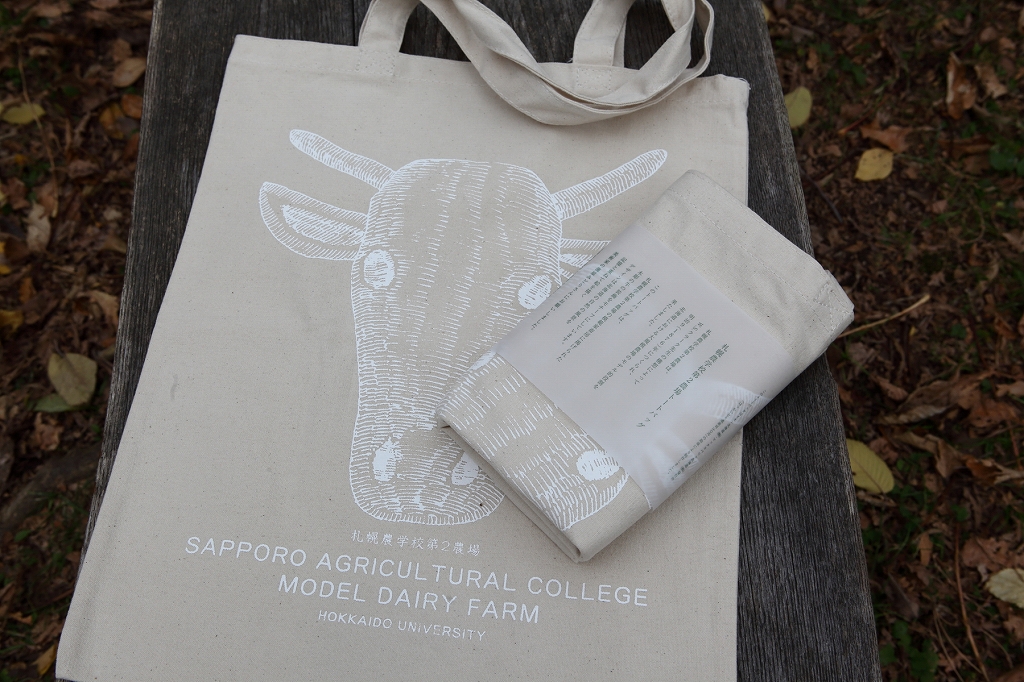
Tote bag passed out during the guided tour.

Tote bag passed out during the guided tour.
Gifts were prepared for all the participants to the Farm No. 2 Guided Tour held a few days in autumn. A tote bag, with a print of a cow symbolizing the Model Barn, was designed by Kanbara Midori, designer and artist. In addition, distribution of a map which shows the route to Farm No.2 at the Hokkaido University Museum has also began. The map was made by artist Honda Seiji, who produces water color paintings and 3D works. There was a sense of freshness in combining Farm No.2 with art.
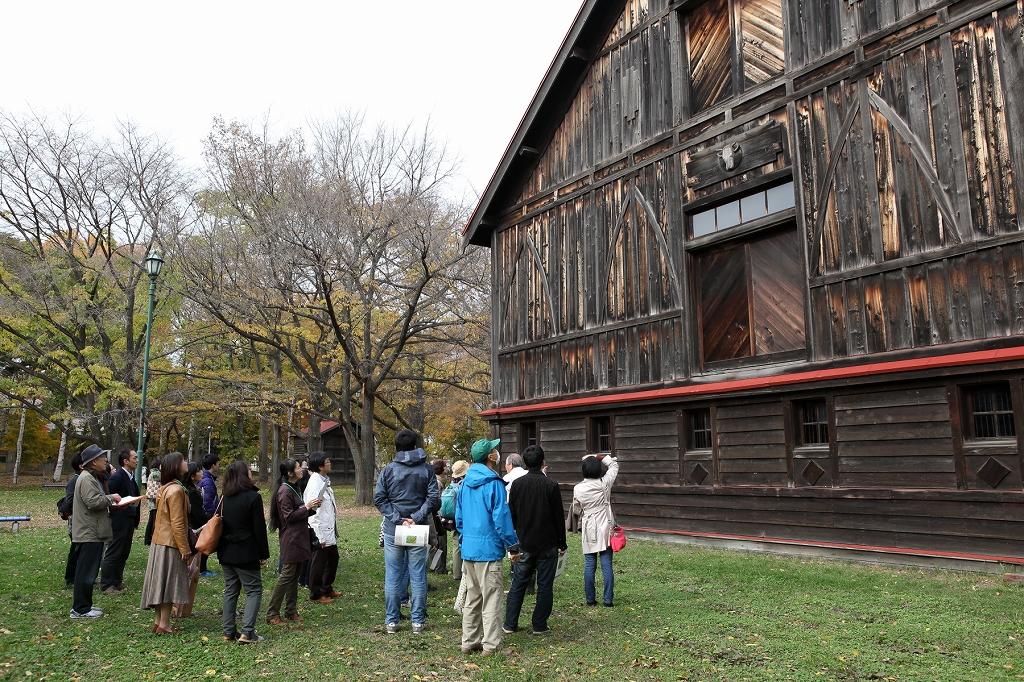
A guided tour. The decoration of a cow can also be seen.
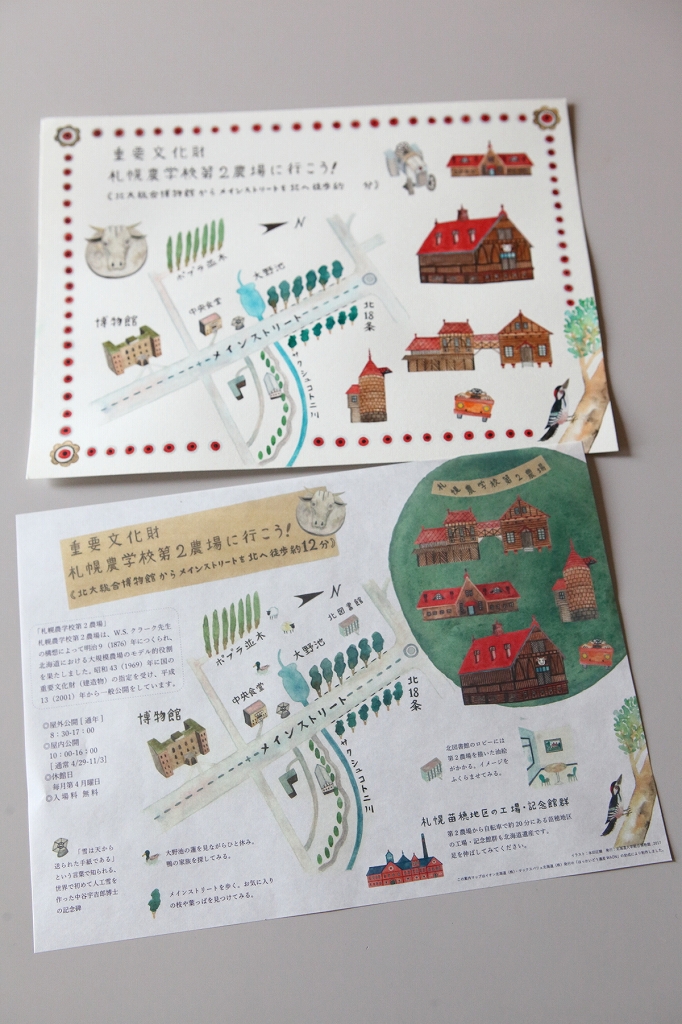
The map based on the original water color artwork produced by Honda Seiji.
Promotional activities were developed by Yamashita Shunsuke, assistant professor at the Hokkaido University Museum, who wants many people to know about Farm No. 2. There are reasons why Yamashita puts so much effort into “finding ways so people will visit Farm No.2.”
The Meiji era buildings at Farm No.2 are designated as important cultural properties. Their existence is well-known with many people visiting the sites to see the architectural style, structure, and European scenery. However, the agricultural tools and equipment exhibited in the buildings have not promoted interest as the building. There are many ready-made products and general-purpose goods, but they are not used as research resources. Since determine their value is difficult, they are sometimes overlooked for preservation or utilization.
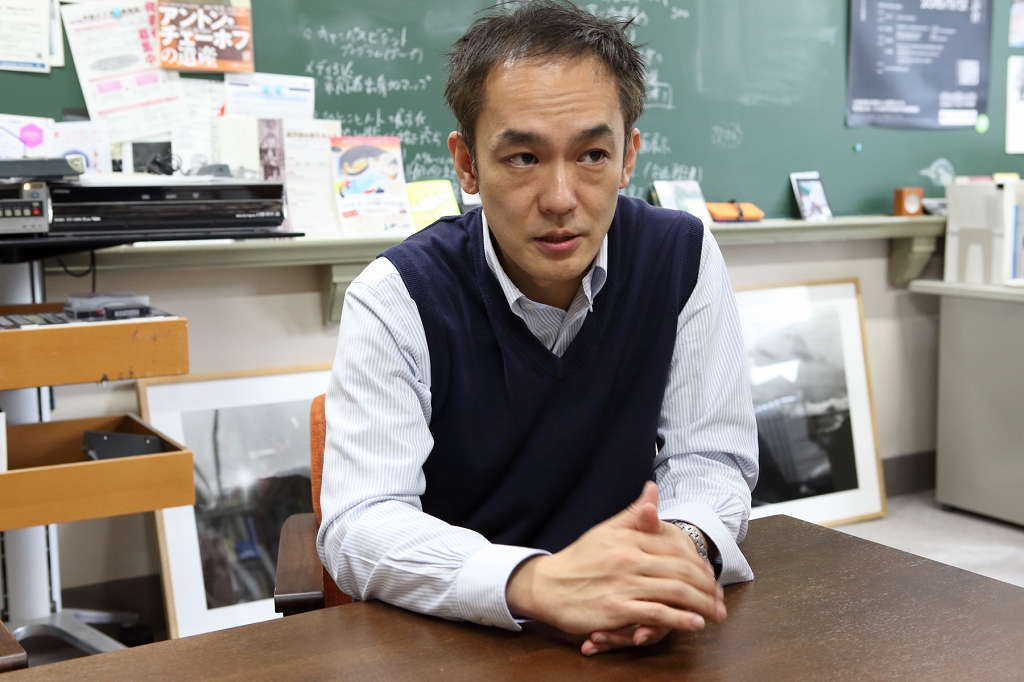
Yamashita Shunsuke has developed a platform to utilize the resources at Farm No.2.
Yamashita used to work with research materials at Kyoto University Museum Archives, specializing in academic resources, such as photos, videos, and equipment used for research and education, which can be easily overlooked during preservation and utilization carried out by a museum. However, sometimes this activity highlights a value in addition to that of the original purpose of research.
“For example, an old photo taken of the surroundings during field work can be a resource to show environmental change over time. The photo taken for a purpose other than the original research has scientific value.”
Likewise, resources such as agricultural tools exhibited in Farm No. 2 may also have additional value in fields other than agriculture, dairy, and architecture. As a test, a collaboration with the artist was envisioned.
Yoko Sasaki, a graduate school student majoring in art history is in charge of coordination with the artists. Ms. Sasaki selects the artists to assign, and gives a presentation to Prof. Yamashita.
Ms. Sasaki says “Ms. Kanbara also works on product design and can make user-friendly products. And Mr. Honda makes fanciful creations which are captivating. I think he can create a world that everyone wants to walk in to.”
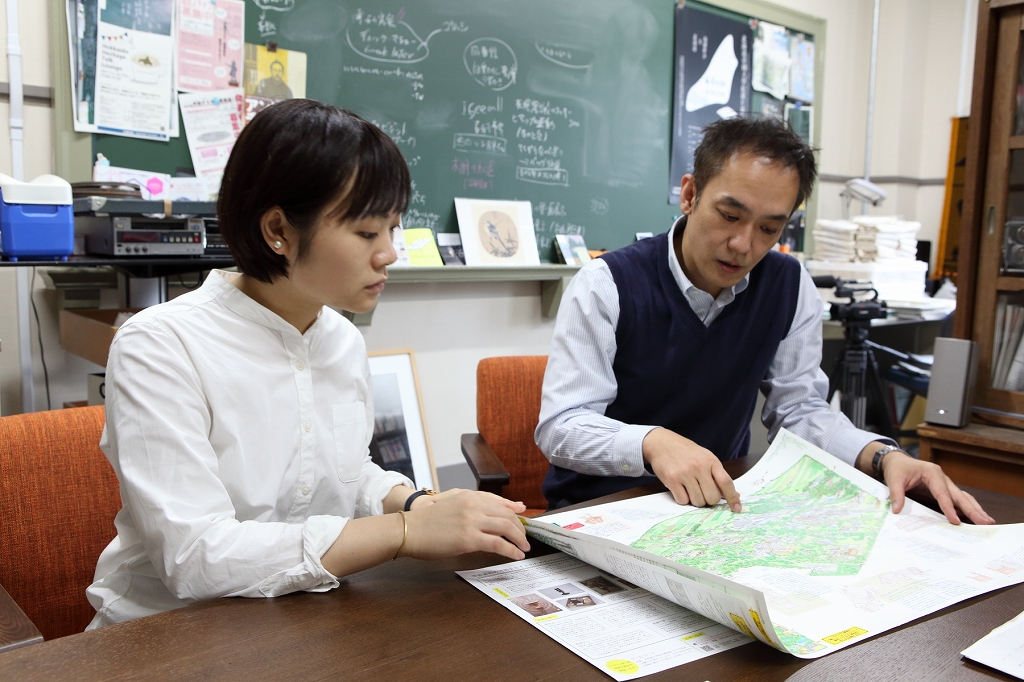
“If the map has too much information, it will difficult to see.” Ms. Sasaki (left) and Prof. Yamashita narrow down the information.

Original drawing of the map
Farm No. 2 as expressed through the eyes of artists, demonstrate the possibility of utilization in areas other than exhibition. Yamashita says “For the future museum, what kind of relation the things and people can have will be more important, rather than the things as an exhibition. Developing a mechanism to uncover future contents to be utilized by the next generation is needed.”
The Hokkaido University Museum
Kita 10-jo, Nishi 8-chome, Kita-ku, Sapporo, Hokkaido
TEL: 011-706-2658
Open: 10:00-17:00(On Fridays, June-October 10:00-21:00)
Close: Mondays (Open on holidays, closed the following weekday), September 4, December 28- January 4, January 14-15, February 25, March 12
Web Site